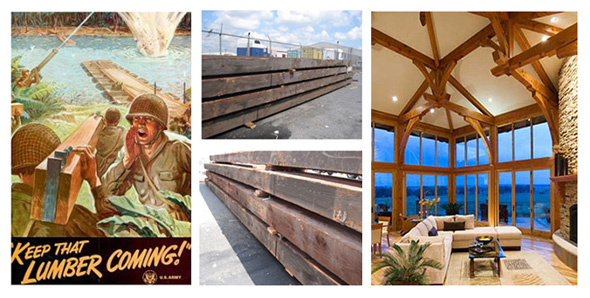How many types of trees on earth? 60,000 is a good working number, according to Colin Trudge, an author on the subject. Of this total, an NYC hardwood dealer carries about twenty-five varieties in the form of solid lumber. The reclaimed wood species that are harvested locally is about half this number (roughly twelve), and half of these, or a handful, make up the bulk of antique and vintage woods salvaged in the city. The list includes Longleaf Pine, Red Spruce, Eastern Hemlock, Douglas Fir, Eastern White Pine and Shortleaf Pine. Of these, two predominate; Red Spruce (Picea rubens) and Longleaf Pine (Picea palustris) – the former comes from multi-family residential buildings (tenements etc.) and the latter from commercial structures (warehouses, etc). In looking at the antique and vintage lumber that flows into the city’s c & d waste stream, just one, Red Spruce, remains at the top of the waste heap in its potential environmental value. It represents the largest volume of reclaimed lumber and is currently the most difficult to re-use. The issue of recycling this and other “Large dimensional lumber”, is now being taken up by New York City government and an Urban Green Council task force. see “NYC Lumber Law”.
The following links to a brief profile of twelve woods that are reclaimed from dismantled structures in NYC.
Photos from istockphoto.com unless otherwise indicated.




